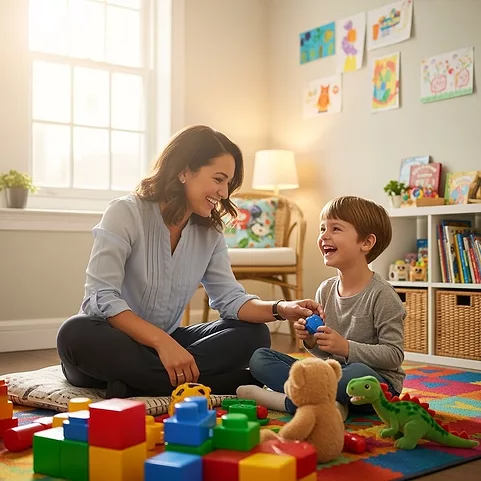Home » Methylphenidate Max Dosing
Methylphenidate Max Dosing
February 11, 2020
From The Carlat Child Psychiatry Report
Thomas Jordan, MD.
Dr. Jordan has disclosed that he has no relevant financial or other interests in any commercial companies pertaining to this educational activity.
Review of: Ching C et al, JAMA Pediatr 2019;173(7):630–639
Methylphenidate was one of the first stimulants prescribed for the treatment of ADHD in children, adolescents, and adults. Its efficacy is clear, and its availability in immediate release, sustained release, osmotic release oral system (OROS, brand name Concerta), and transdermal patch keeps it a popular choice. The typical dosing strategy in children and adolescents is to start low and go slow, but if symptoms remain and side effects are tolerable, at what dose should we stop titrating?
The standard FDA dosing information recommends a maximum dose of 60 mg per day in children and adolescents ages 6–17 for both immediate release and sustained release methylphenidate. For the OROS formulation, the dose is capped at 54 mg per day for children ages 6–12 and 72 mg per day in adolescents ages 13–17. These guidelines are backed by a few randomized controlled trials, and various organizations have slightly different maximum dose guidelines, but does the rest of the literature support these limits?
This meta-analysis reviewed data from 11 randomized controlled trials (1304 participants) and 38 cohort studies (5524 participants) examining methylphenidate dosing strategies. Some studies cited guidelines or previous studies for their maximum doses, but several of the studies capped themselves at a lower maximum dose than the source they were citing recommended. Most studies listed maximum doses far lower than the common guidelines. Only one cohort study went higher—90 mg per day of OROS for ages 6–13. Overall adverse effects were common at a rate of 66% in the cohort studies. The most common side effects were decreased appetite (33%), insomnia (15%), and headaches (14%). Serious adverse events were exceedingly rare, with transient psychosis reported in just 5 cohort study participants and hypertension in 7.
CCPR’s Take
There is ample evidence of efficacy for many patients at dosages lower than the suggested maximums, yet evidence for a true maximum dose for methylphenidate is lacking. If a patient’s ADHD symptoms remain on a given dose, and a review of the differential diagnosis yields no other intercurrent conditions, we do not have evidence that would preclude continued careful upward titration while monitoring for side effects.
Child PsychiatryMethylphenidate was one of the first stimulants prescribed for the treatment of ADHD in children, adolescents, and adults. Its efficacy is clear, and its availability in immediate release, sustained release, osmotic release oral system (OROS, brand name Concerta), and transdermal patch keeps it a popular choice. The typical dosing strategy in children and adolescents is to start low and go slow, but if symptoms remain and side effects are tolerable, at what dose should we stop titrating?
The standard FDA dosing information recommends a maximum dose of 60 mg per day in children and adolescents ages 6–17 for both immediate release and sustained release methylphenidate. For the OROS formulation, the dose is capped at 54 mg per day for children ages 6–12 and 72 mg per day in adolescents ages 13–17. These guidelines are backed by a few randomized controlled trials, and various organizations have slightly different maximum dose guidelines, but does the rest of the literature support these limits?
This meta-analysis reviewed data from 11 randomized controlled trials (1304 participants) and 38 cohort studies (5524 participants) examining methylphenidate dosing strategies. Some studies cited guidelines or previous studies for their maximum doses, but several of the studies capped themselves at a lower maximum dose than the source they were citing recommended. Most studies listed maximum doses far lower than the common guidelines. Only one cohort study went higher—90 mg per day of OROS for ages 6–13. Overall adverse effects were common at a rate of 66% in the cohort studies. The most common side effects were decreased appetite (33%), insomnia (15%), and headaches (14%). Serious adverse events were exceedingly rare, with transient psychosis reported in just 5 cohort study participants and hypertension in 7.
CCPR’s Take
There is ample evidence of efficacy for many patients at dosages lower than the suggested maximums, yet evidence for a true maximum dose for methylphenidate is lacking. If a patient’s ADHD symptoms remain on a given dose, and a review of the differential diagnosis yields no other intercurrent conditions, we do not have evidence that would preclude continued careful upward titration while monitoring for side effects.
KEYWORDS adhd attention attention-deficit-hyperactivity-disorder medication methylphenidate stimulant teen teens
Issue Date: February 11, 2020
Table Of Contents
Recommended
Newsletters
Please see our Terms and Conditions, Privacy Policy, Subscription Agreement, Use of Cookies, and Hardware/Software Requirements to view our website.
© 2026 Carlat Publishing, LLC and Affiliates, All Rights Reserved.


_-The-Breakthrough-Antipsychotic-That-Could-Change-Everything.webp?t=1729528747)



